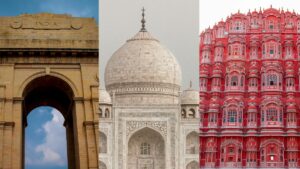Qatar, a nation rich in history and maritime heritage, boasts a deep-rooted connection with the sea. One of the most iconic symbols of this connection is the Traditional Dhow boat Qatar. These wooden vessels have been an integral part of Qatari culture for centuries, serving as fishing boats, pearl-diving ships, and crucial trading vessels. Today, the dhow remains a significant part of Qatar’s cultural identity, offering visitors a glimpse into the country’s seafaring past while providing unforgettable cruising experiences along the Arabian Gulf.
The History of the Traditional Dhow Boat
The dhow boat has played a pivotal role in Qatar’s maritime history. Originating in the Arabian Peninsula, these vessels were initially used for trade and transportation across the Arabian Gulf, India, and East Africa. Qatari dhows were primarily used for pearl diving, an industry that flourished before the discovery of oil.
During the late 19th and early 20th centuries, pearl diving was one of Qatar’s main economic activities. Hundreds of dhows would set sail during the pearling season, manned by skilled divers and sailors. These boats were designed for endurance, with their sturdy wooden construction allowing them to withstand the harsh conditions of the open sea.
As Qatar transitioned into an oil-rich nation, the demand for pearl diving declined, but the dhow remained an important cultural symbol. Today, these boats are preserved and used for leisure and tourism, showcasing the country’s rich maritime traditions.
Design and Construction of a Traditional Dhow
Traditional dhow boats are known for their elegant and functional design. They are crafted from high-quality wood, such as teak and mahogany, using time-honored shipbuilding techniques passed down through generations. The construction of a dhow is a meticulous process that can take months or even years to complete.
The main features of a dhow include:
Long and Narrow Hull: Designed to navigate both deep and shallow waters with ease.
Large Triangular Sails (Lateen Sails): These sails harness the wind efficiently, making dhows ideal for long sea voyages.
Spacious Decks: Originally used for storing goods, these decks now provide ample space for passengers in modern-day leisure dhows.
Hand-Carved Details: Traditional dhows often feature intricate carvings and designs that reflect Qatari artistry and craftsmanship.
Types of Dhows
There are several types of dhows, each serving different purposes. The most common include:
Jalibut: A versatile dhow used for both fishing and pearl diving.
Sambuk: A large dhow with an elegant design, historically used for long voyages and trade.
Baghlah: A heavy-duty dhow capable of carrying substantial cargo.
Boom: One of the largest dhows, often used for trading with the Indian subcontinent.
Today, modified versions of these traditional dhows serve as floating restaurants and cruise boats, offering a unique way to experience Qatar’s coastal beauty.
Dhow Cruises in Qatar
A dhow cruise is one of the best ways to explore Qatar’s coastline and experience its maritime charm. These cruises offer a blend of tradition and luxury, allowing tourists to enjoy stunning views of Doha’s skyline while relaxing on a beautifully restored dhow.
Types of Dhow Cruises
Doha Corniche Cruise: This popular cruise offers breathtaking views of Doha’s iconic landmarks, including the Museum of Islamic Art and the futuristic skyline of West Bay.
Sunset Dhow Cruise: A romantic and picturesque experience as the sun sets over the Arabian Gulf.
Dinner Dhow Cruise: Enjoy a lavish buffet featuring traditional Qatari and international cuisine while cruising along the Corniche.
Private Dhow Charters: Ideal for special occasions, corporate events, or family gatherings.
What to Expect on a Dhow Cruise
Traditional Qatari Hospitality: Warm welcomes and excellent service.
Scenic Views: Stunning panoramas of Doha’s skyline and the Arabian Gulf.
Entertainment: Live music, cultural performances, and even traditional Tanoura dance.
Delicious Cuisine: A mix of Qatari and international dishes served onboard.
Relaxation and Luxury: Comfortable seating, traditional décor, and sometimes even air-conditioned cabins.
Dhow Festivals and Cultural Events
Qatar hosts several cultural events to celebrate its maritime heritage. One of the most significant is the Katara Traditional Dhow Festival, held annually at Katara Cultural Village. This festival showcases traditional dhow craftsmanship, boat races, cultural performances, and exhibitions that highlight Qatar’s rich seafaring traditions.
Visitors can explore the different types of dhows, witness shipbuilding demonstrations, and engage with local artisans who keep these traditions alive. The festival serves as an important reminder of Qatar’s maritime legacy and its impact on the nation’s identity.
Why Experience a Dhow Cruise in Qatar?
Experiencing a dhow cruise in Qatar is more than just a boat ride—it’s an immersion into the country’s heritage. Here’s why you shouldn’t miss it:
Cultural Connection: Learn about Qatar’s maritime past and the significance of dhows in its history.
Unparalleled Views: Capture breathtaking photos of Doha’s skyline and seascape.
Relaxation and Enjoyment: Enjoy a serene journey on calm waters, away from the hustle and bustle of the city.
Memorable Experience: Whether with family, friends, or for a romantic getaway, a dhow cruise creates lasting memories.
Conclusion
The traditional dhow boat in Qatar is more than just a relic of the past—it is a living testament to the country’s rich maritime heritage. Whether you are a history enthusiast, a cultural explorer, or simply someone looking for a unique experience, a dhow cruise offers a perfect blend of tradition and modern comfort. As you sail across the Arabian Gulf, with the cool breeze and stunning views surrounding you, you will understand why the dhow remains an enduring symbol of Qatar’s soul and spirit.
For those looking to embark on an authentic Qatari adventure, booking a dhow cruise is a must. Experience the magic of the sea, the warmth of Qatari hospitality, and the timeless beauty of these legendary wooden vessels.





